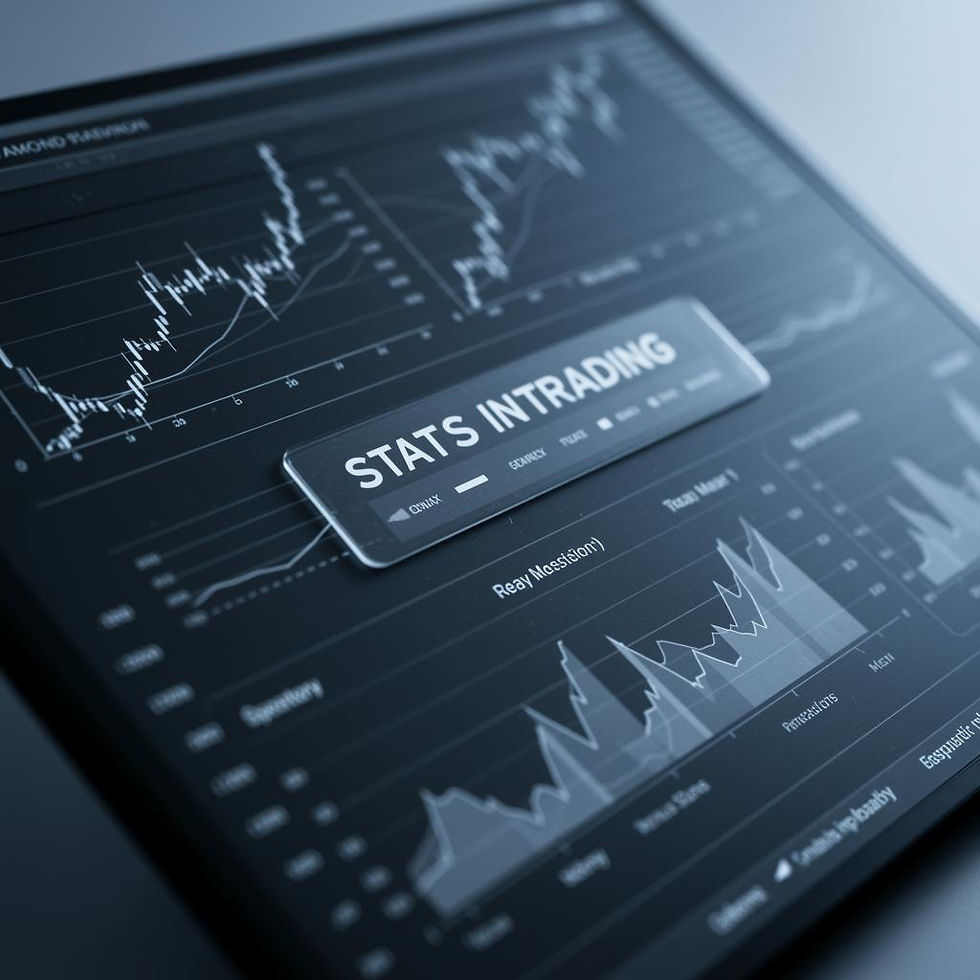Systematic Trading: A Critical Look at Algorithmic Investing
- Bryan Downing
- Jul 19, 2024
- 3 min read
The landscape of investing is constantly evolving, and the video dives into systematic trading, a strategy that leverages algorithms to make investment decisions. Brian Downing, the speaker, presents systematic trading as the superior approach in the current market, particularly as he views the traditional Buy and Hold strategy as outdated. This article delves deeper into the video's claims, exploring systematic trading's potential while offering a balanced perspective.

The video opens with a bold statement: Buy and Hold is no longer a safe strategy [1]. Brian argues that the market is headed for a correction, potentially causing significant losses for Buy and Hold investors [1]. While market corrections are a natural part of the investment cycle, predicting their timing and severity is notoriously difficult. This claim might raise a red flag for some viewers, as it lacks concrete evidence and could be interpreted as fear-mongering.
The video then pivots to systematic trading as a potential solution [1]. This approach utilizes algorithms to define entry and exit points for investments, aiming to remove emotions from the decision-making process [1]. Systematic trading can offer several advantages, including:
Reduced Emotional Bias: Emotions like fear and greed can cloud judgment, leading to suboptimal investment decisions. Algorithms, by their nature, are unemotional and can follow pre-defined rules consistently.
Backtesting and Refinement: Systematic trading strategies can be backtested on historical data to assess their performance and identify potential shortcomings. This iterative process allows for ongoing refinement and improvement of the algorithms.
Discipline and Automation: Once a systematic trading strategy is established, algorithms can execute trades automatically, maintaining discipline and eliminating the temptation to deviate from the plan based on fleeting market sentiment.
However, systematic trading is not a silver bullet. Here are some crucial aspects to consider:
Algorithmic Complexity: While simple strategies like moving average crossovers exist, developing and maintaining robust algorithms can be complex, requiring programming knowledge and a deep understanding of financial markets.
Data Dependence: The effectiveness of systematic trading hinges on the quality and relevance of the data used to develop and test the algorithms. Insufficient or inaccurate data can lead to flawed strategies.
Market Dynamics: Markets are not static, and unforeseen events or paradigm shifts can render historical data and established algorithms less effective. Regular monitoring and adaptation are essential.
Transaction Costs: Frequent trading associated with some systematic strategies can incur significant transaction costs, potentially eroding profits.
Brian recommends TradingView, a platform that allows users to develop and automate trading strategies [3]. This can be a valuable tool for those interested in exploring systematic trading. However, it's important to remember that the video also promotes Brian's website, Quant Labs, which offers educational resources on systematic trading [4].
Conclusion
Systematic trading offers a compelling alternative to traditional investment approaches. By removing emotions and employing algorithmic discipline, it can potentially enhance investment outcomes. However, developing and maintaining effective systematic trading strategies requires significant effort, expertise, and an ongoing commitment to refinement.
The video presents a strong case for systematic trading, but viewers should conduct their own research and realistically assess their skills and resources before venturing down this path. A balanced approach that acknowledges both the potential benefits and inherent challenges of systematic trading will serve investors best.
Video summary
The video is about systematic trading, a way of investing that uses algorithms to make trading decisions. The speaker, Brian Downing, believes that systematic trading is the best way to invest in the current market, especially since the traditional Buy and Hold strategy is no longer safe.
Here are the key points of the video:
Buy and Hold is no longer a safe strategy because the market is going to enter a correction and investors could lose a significant amount of money.
Systematic trading is a better alternative because it uses algorithms to make decisions, which can help to avoid emotional investing.
Systematic trading can be done with simple tools, such as the moving average crossover strategy.
The speaker recommends using TradingView, a platform that allows you to automate your trading strategies.
The speaker also recommends his own website, Quant Labs, which offers educational resources on systematic trading.
Overall, the video is a promotion of systematic trading as a safe and effective way to invest in the current market. The speaker criticizes the Buy and Hold strategy and reccomends the viewers to learn more about systematic trading through his website.



Comments